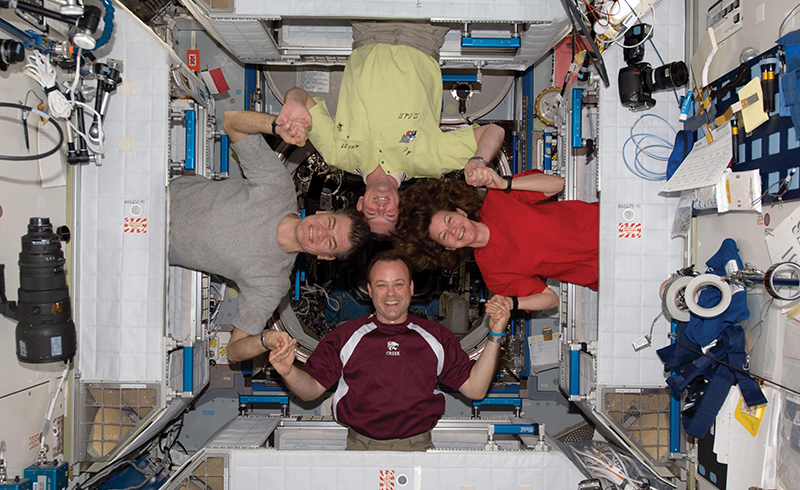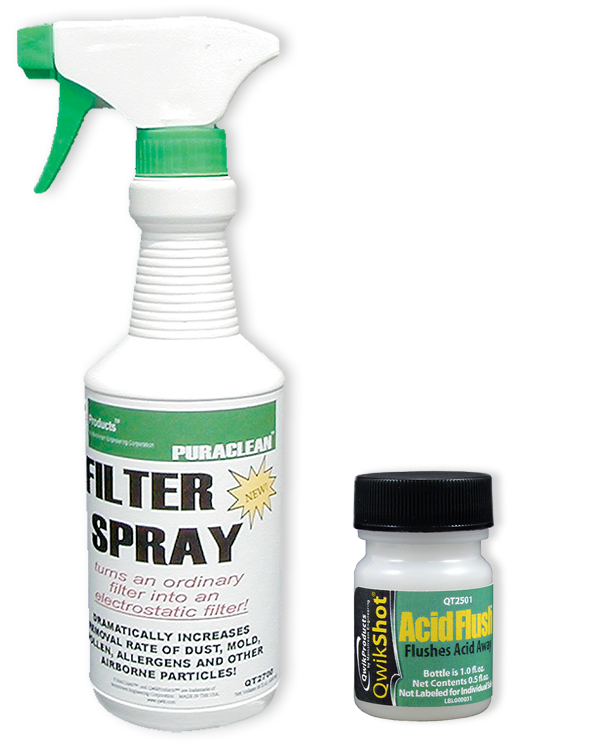
Thermal Components Boost Performance of HVAC Systems
NASA Technology
As the International Space Station (ISS) travels 17,500 miles per hour, normal is having a constant sensation of free-falling. Normal is no rain, but an extreme amount of shine—with temperatures reaching 250 ?F when facing the Sun. Thanks to a number of advanced control systems onboard the ISS, however, the interior of the station remains a cool, comfortable, normal environment where astronauts can live and work for extended periods of time.
There are two main control systems on the ISS that make it possible for humans to survive in space: the Thermal Control System (TCS) and the Environmental Control and Life Support system. These intricate assemblies work together to supply water and oxygen, regulate temperature and pressure, maintain air quality, and manage waste. Through artificial means, these systems create a habitable environment for the space station’s crew.
The TCS constantly works to regulate the temperature not only for astronauts, but for the critical instruments and machines inside the spacecraft as well. To do its job, the TCS encompasses several components and systems both inside and outside of the ISS. Inside the spacecraft, a liquid heat-exchange process mechanically pumps fluids in closed-loop circuits to collect, transport, and reject heat. Outside the ISS, an external system circulates anhydrous ammonia to transport heat and cool equipment, and radiators release the heat into space.
Over the years, NASA has worked with a variety of partners—public and private, national and international—to develop and refine the most complex thermal control systems ever built for spacecraft, including the one on the ISS.
Partnership
To ensure a normal environment for astronauts and instruments, a Rockledge, Florida-based company, Mainstream Engineering Corporation, has steadily worked with NASA field centers since the 1980s to develop advanced thermal control technology for spacecraft. First featured in Spinoff 1999 for the development of a commercial product called QwikBoost, based on work with NASA on a liquid formulation for a chemical/mechanical heat pump, Mainstream Engineering has since licensed QwikBoost to a company called IDQ Inc. that incorporates the technology into a successful line of products to recharge automotive air conditioning (Spinoff 2010).
Once again, Mainstream has built upon its work with NASA, developing two new products that are offering benefits here on Earth: PuraClean filter spray and QwikShot acid flush. PuraClean grew from work under a Small Business Innovation Research (SBIR) award with Johnson Space Center to research a nontoxic heat transport fluid for the thermal control systems inside a spacecraft. The second product, QwikShot, grew from SBIR work with Johnson to demonstrate high-performance, low-cost thermal control equipment.
Benefits
PuraClean is a liquid spray product that can be applied to any kind of disposable air filter for heating, ventilating, and air conditioning (HVAC) units. By insulating the fibers on the filter with a coating that extends the electrostatic properties of the filter, the spray increases its dirt-attracting and holding capabilities. It is designed to improve the performance of any type of filter, such as reusable metal filters, expensive electrostatic filters, or inexpensive spun glass or foam filters. “Any household, laboratory, hospital, automobile, school, and anywhere an air filter is used can reap the benefits of PuraClean,” says Brandon Scheckel, director of business development at Mainstream Engineering. “After the SBIR, Mainstream engineers worked on the formulation to make it fast evaporating, while still having lasting effects. Also, the goal was to make it allergy and asthma friendly.”
According to results from independent laboratory testing, filters treated by PuraClean provided an improvement in filtration efficiency ranging from 200 percent when exposed to 3 micrometer particles, to more than 1,200 percent when exposed to 7 micrometer particles such as pollen, dust, and dirt. Test results also indicated that PuraClean caused no measurable difference in resistance to airflow. Mainstream says that, unlike other filter sprays, PuraClean can actually make filters more efficient because air conditioner evaporator coils stay cleaner and provide improved energy efficiency.
Available to service technicians from HVAC suppliers, Mainstream has sold between 7,000 and 8,000 bottles of the product since 2007, but expects those numbers to drastically grow in the near future. Currently, the product is being reviewed by the Asthma and Allergy Friendly Certification Program to become a certified residential allergy- and asthma-reducing HVAC product. “Mainstream Engineering is working hard at making this NASA-developed technology available to every consumer,” says Scheckel.
Much like PuraClean, Scheckel says the development of the QwikShot acid flush product took place after research and development under a NASA SBIR. “We worked on exacting the formulation and wanted to make it as safe and easy to use as possible,” he says. “QwikShot improves the thermal stability of air conditioning and refrigeration systems and extends the life of the system by removing system-destroying acids from the thermal circuit.”
Used for vaporizing acid and moisture when it occurs in air conditioning and refrigeration systems, QwikShot is injected into a system during operation. After it is introduced, the product vaporizes with refrigerant and travels throughout the system to chemically attach to acid and moisture molecules. It then flushes the molecules to the filter or drier. Unlike acid neutralizers that leave a salt-based residue from a chemical reaction, QwikShot leaves no residue in the system.
“Traditional techniques require the technician to open the system and neutralize compressor oil by opening up the compressor, or a line set near the compressor, and add the neutralizing product, says Scheckel. QwikShot is simply introduced into the compressor oil.
According to Mainstream, over 75,000 applications of QwikShot have been sold. “HVAC and refrigeration service technicians who fix residential and commercial air conditioning systems use QwikShot to treat systems with signs of acid prior to system failure, and it improves the thermal stability,” Scheckel says.
Due to the research and development opportunities provided through NASA’s SBIR program, Mainstream has significantly improved the normal operation of HVAC systems on Earth.
PuraClean® and QwikShot® are registered trademarks of Mainstream Engineering Corporation.

PuraClean improves the performance of air filters while QwikShot vaporizes acid and moisture when it occurs in air conditioning and refrigeration systems.

Thanks to the advanced control systems onboard the International Space Station, NASA astronauts Ron Garan (bottom) and Cady Coleman (right), European Space Agency astronaut Paolo Nespoli (left) and Russian cosmonaut Alexander Samokutyaev (top), enjoy a comfortable environment while in orbit.













